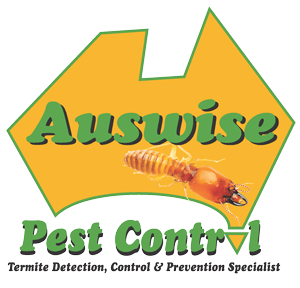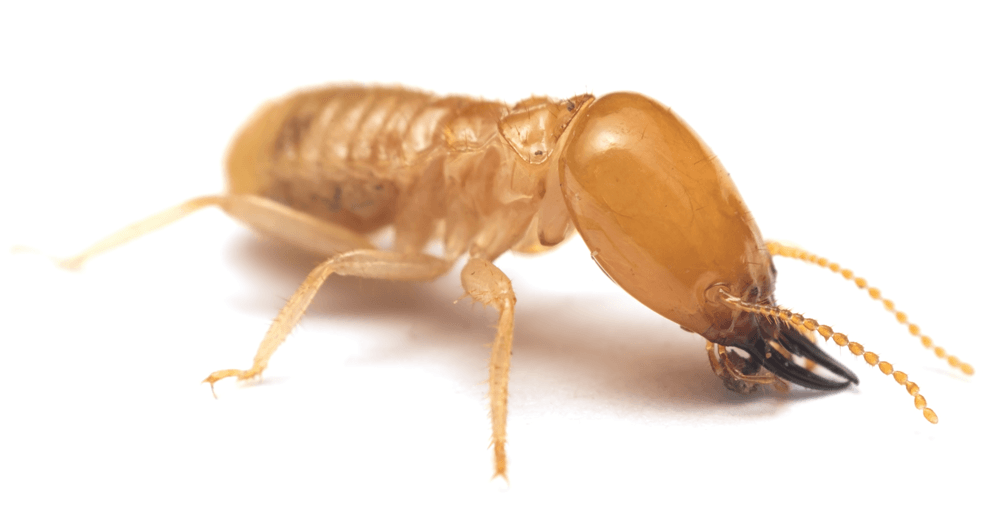More than 350 species of termites have been recorded in Australia, and around 30 species are active pests causing structural damage to buildings and all wooden structures. The species that cause property damage are Subterranean Termites, which live and colonize underground, as well as some Drywood Termites, which live inside the wooden structures they feed on.
Subterranean Termites feed on timber and timber products and any material containing cellulose. Their food sources include building contents such as furniture, all paper materials, fabrics, clothing, footwear, packing cases, and tools. Termites can also damage some non-cellulose materials including inferior concrete, soft metals, and soft plastics, building sealants, and rigid foam insulation.
Subterranean Termites typically form nests in the soil near the surface in stumps, rotten wood, and living trees. Sometimes the nest can take the shape of a conical or dome-shaped mound. A colony may exist for many years, and as it matures, it can have a population well in excess of one million termites. Attack by Subterranean Termites originates from the nest. Underground foraging galleries may reach wood or timber lying on or buried in the ground. An attack may occur well above ground level either inside the wood or by way of mud-walled shelter-tubes ‘plastered’ to exposed surfaces. Timber resting on a solid substructure may be reached by employing these shelter-tubes or through independent, freestanding columns built by the termites. In some cases, where a source of permanent moisture, e.g., leaking plumbing, is available to the termites within the building, Subterranean Termites can form a nest inside a building without soil contact.
In rare instances, scantling timbers delivered to a building site may contain small pockets of termites. However, these termites are highly unlikely to pose a risk to the building, as they are the remnants of feeding parties of the main colony. Once isolated from the nest, the termites are unable to survive as the moisture content of the timber diminishes. It should also be noted that termites, which are commonly encountered in both unseasoned scantling timbers and ‘green’ firewood, are species that are incapable of damaging dry (seasoned) timbers. The presence of larvae (grubs) of wood-boring insects in firewood constitutes little threat to either structural or decorative building timbers.
‘Drywood Termites’ are economically significant only in restricted coastal, tropical, subtropical and adjacent tableland areas of Australia. Unlike Subterranean Termites, they do not construct galleries or tunnels connecting the infested timber with the soil. They form nests inside wood upon which they feed and may attack any piece of susceptible timber, regardless of its position in a building. The evidence of infestation by these species is the presence of dry granular fecal pellets that may be stored in disused galleries or ejected through small openings in the surface of the wood.
The first stage of any termite management program is a thorough inspection. All inspections carried out by Auswise Pest Control are performed in accordance with the Australian Standards AS 3660 or AS 4349 for Pre Purchase, or Pre Sale reports.
Termite damage often can only be detected by a trained professional. There may be some evidence of infestation and damage, including sawdust or shredded paper material in crawlspaces or around interior wooden structures. Frequently, there are no visible visual signs of damage or infestation, and many owners have damaged property without realising its existence. Termite damage is very costly to repair and remediate. The longer that damage goes without treatment, the more involved repairs become, and the risk of total loss increases significantly over time.
A full report is supplied outlining any activity, damage, and areas which are conducive to termite activity, and which should be rectified to reduce or prevent the likelihood of infestation.
From this inspection, a practicable termite management program can be developed. There are many options available and these will be explained to you in full, and a proposal will be supplied with prices unique to each building and property.
Termite management and control involves exterminating all existing termites and their colonies and excluding future colonization and infestation. The safe and professionally responsible use of pesticides can be effective in killing existing termite colonies inside or underground near wood or other food sources.
Termite management can include chemical treatments of soil and building components along the ground line and building foundations. Adequate drainage and water control are essential in management as well, as termites thrive in moist environments. Eliminating contact of any termite food source directly with soil also prevents unseen termite infestation of buildings and structures.
Termite management systems prevent termites from entering buildings. When termites build around termite management systems, the evidence of their work is openly visible during regular inspections. Termite management systems work properly when they are designed with consideration for all the specific construction details for any given building and building site characteristics.
Termite management also includes ongoing monitoring and inspections. Baiting and monitoring systems can attract and kill termites, which provides valuable feedback to us during regular inspections of managed properties.
If you have found termite activity in your home or property, do not disturb or try to treat them yourself. Call us immediately to arrange for an inspection to be carried out.
Auswise Pest Control will give you sound professional advice and competitive pricing while using only the most effective products on the market. Call us today for more information.

